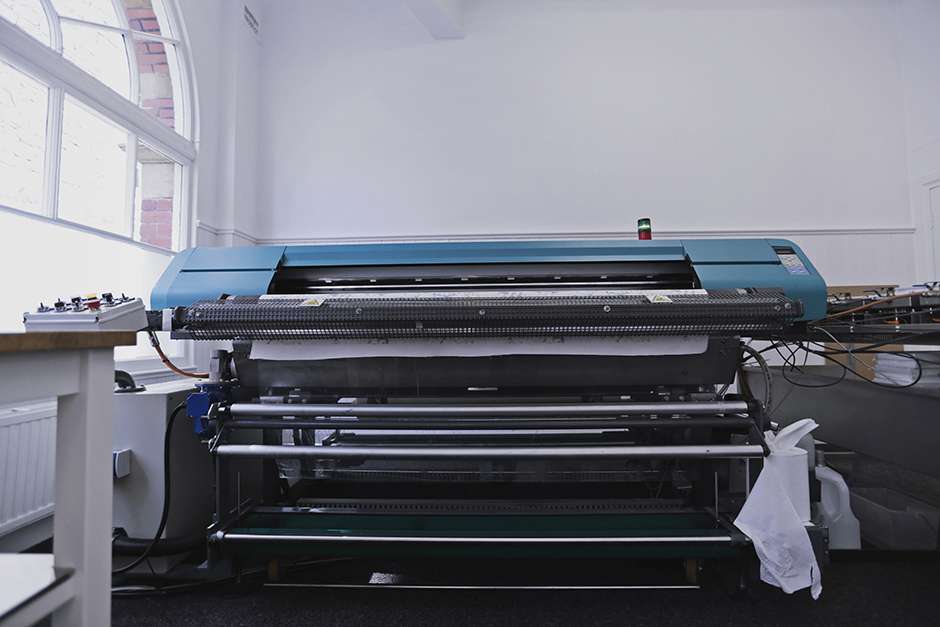
To put it simply, digital fabric printing is the act of printing digital files on to fabric, with the printing part of the process working much like your desktop inkjet printer. Only, think bigger and where the printing element is only one part of a larger process.
Here are a number of different types of Digital Fabric Printing Ink Technologies. Each works on specific fabric types and being best suited to particular purposes and offering varying qualities of print. The type of fabric printing will also dictate both the price and longevity of your printed design.
A simple demonstration of this is the difference between a T-shirt that has a waxy quality to the print design, where the print effectively sits on top of the fabric compared to those where you can feel no difference in the fabric whether it’s printed on or not, and variations in between these.
This diagram demonstrates the 4 basic ink technologies/chemistry's and the fabrics that they are able to print on. Reactive Dye Digital Printing is the most versatile of the high end digital printing technologies, with its ability to print onto both silks and plant based materials (eg cotton, linen and bamboo) and where the print has no effect on the handle of the fabric as the dye bonds directly with the fabric fibers. This also means that reactive printing has a greater light and rub fastness than other print technologies making it perfect for apparel and home ware. What do you need to know before you’re ready to print?
Color: Have fun with your design, you can print as many colors as you like when using digital printing. It’s designed so that you can achieve photo quality detail so there should be no restriction on the colors you use, just have fun!
Unlike with traditional screen printing where the thick ink ‘fixer’ is incorporated into the ink itself, with digitally printing this fixer would clog up a printers ink heads, so the fixer must be applied to the fabric before it is printed. This is referred to as the ‘padding’ or pre-treatment. This is done by an external fabric finisher (which sounds confusing when in digital print terms this is the first part of the process!)
Each new pre-treated fabric is then print tested and the printer is calibrated to the amount of ink that fabric can hold to achieve a crisp, bright print. Too much ink and a print will not be crisp, too little and the color accuracy/brightness may be lost. The average shrinkage is calculated and then the fabric is given a ‘profile’ which the printer uses each time it prints this particular fabric.
Now for printing your design! Your fabric is placed on the printer, the ink head is set to the correct height for the fabric, there is only a few millimeter clearance over the fabric so the height for a silk will be quite different to that of a upholstery weight linen. This head height is important not least to protect the ink heads but it also affects the crispness of the printing.
This is the bit where we look a like a cat watching the tennis, as we watch your print emerge as the print head passes right to left and back again across the fabric, laying the ink on the fabric in layers over a number of passes.
This is the most vulnerable time for the fabric as the print has not yet been ‘fixed’. In order to fix the fabric it must be steamed so that the printed ink can bond to the fibers of the fabric. Each fabric requires a different length and quantity of steam depending on a number of variables including fabric type and length of print.
Once out of the steamer the fabric needs to be washed in order to remove any excess ink, further fix the print and wash out the excess fixer which has now done its job. The fabric is then dried and ironed along with our final quality control check.
Article and Photo Retrieved from:https://make.works/blog/guide-to-digital-fabric-printing